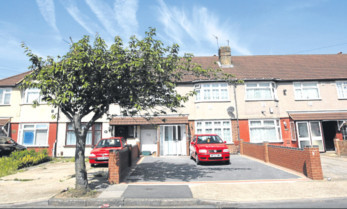
Margaret Thatcher introduced the controversial housing policy in 1980 and since then almost half a million homes have been bought by hopeful Scots.
Did they get a good deal? Well, some clearly did. Magnificent cottages built by rural councils were first to go, leaving small villages with little or no affordable housing. In holiday towns like Oban, flats were sold for as little as £7,000 after the 70% discount was applied. Quite a bargain. It was a once-in-a-lifetime opportunity for ordinary Scots to get on the housing ladder.
But there was a flip side. It was always the best, most popular homes that sold, narrowing the choices for those unwilling to buy or unable to get a mortgage.
As we are now finding, that’s still a lot of Scots.
Since new social housing was also subject to sale with staggering discounts, it became uneconomic to build more council houses to replace the ones sold.
So housing waiting lists went up and homeless families wound up in expensive B&B accommodation. Other problems took longer to emerge many new home owners for example, couldn’t afford “extras” like their share of factor’s bills causing problems with common repairs. Shelter Scotland say the right to buy was like running a bath with the plug out. Any new social housing financed by the state just disappeared straight down the plug. It was estimated that, for every three affordable rented homes sold, just one new home has been built.
Of course that’s not the fault of those who bought. But lost jobs, shorter hours and lower pay have made mortgage payments hard to maintain and thanks to the recession former right-to-buy homes have been hard to sell. It’s thought one in five is now being rented privately at twice the rate that was charged when social landlords were in control. What a waste.
The Scottish Government has already scrapped right to buy for new tenants and it will be ditched completely by 2017. So will tears be shed for the end of right to buy in Scotland?
Well, the best homes are already gone. And the long-term legacy has been a loss of affordable, quality homes to rent for the next generation.
In England, though, the policy has just been extended, with right to buy discounts of £75,000 outside London and a whopping £100,000 in the capital. The qualifying period has also been cut from five to just three years tenancy. Scotland has decided to put affordability and social control back into housing. England wants to create more home owners. The two nations are heading in opposite directions on a vital social policy. Perhaps because the two neighbours also have different ideas about who to thank for decent housing.
Maggie believed the right to buy would transform “dependency culture” Scotland into a conservative-voting, property-owning democracy. Well, it worked in England, didn’t it? But the Tories got no thanks at the polls in Scotland. Quite the reverse. Scots realised the right to buy was part bribe and part distraction as she tried to dismantle the fundamentals of society trade unions, public utilities and powerful councils.
As a result even council-house buying Scots voted Labour in protest.
So will hankies appear when the Scottish Parliament finally consigns the right to buy to history? Not on your nelly.

Enjoy the convenience of having The Sunday Post delivered as a digital ePaper straight to your smartphone, tablet or computer.
Subscribe for only £5.49 a month and enjoy all the benefits of the printed paper as a digital replica.
Subscribe